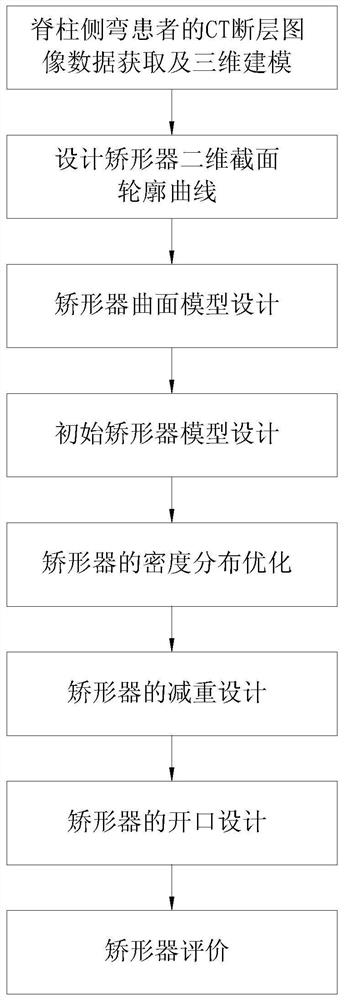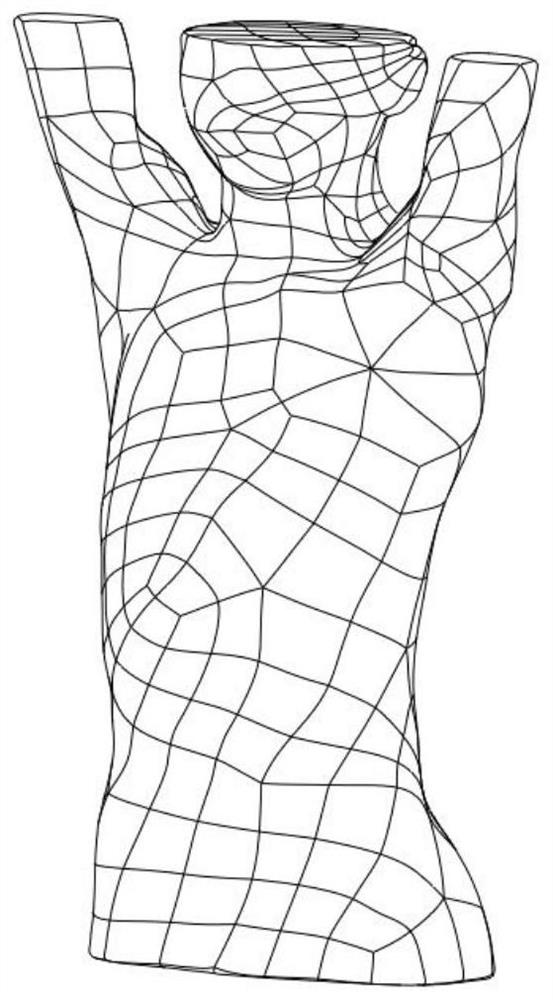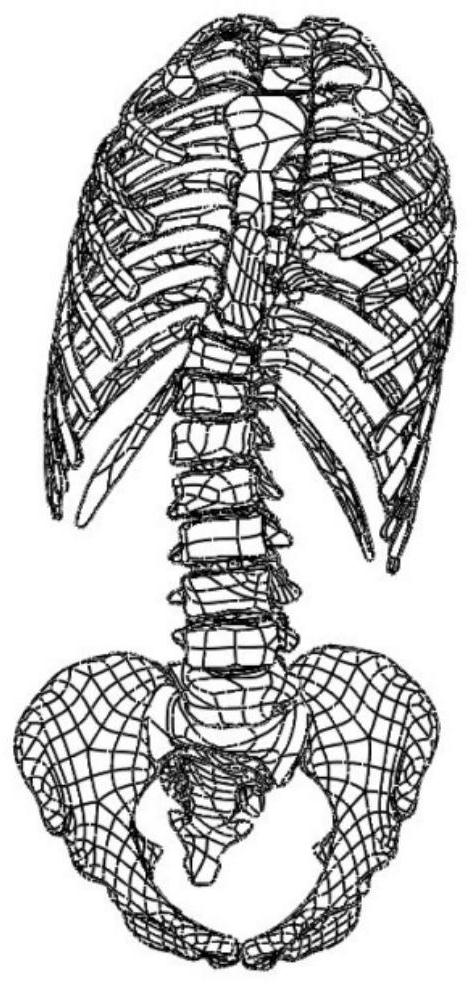A design method of personalized 3D printed scoliosis orthosis
A scoliosis and 3D printing technology, applied in the direction of additive processing, medical science, etc., can solve the problems of decreased user compliance, high production requirements, and dependence on correction effects, so as to reduce hollow or tightened parts and design accuracy The effect of improving and improving the design accuracy
- Summary
- Abstract
- Description
- Claims
- Application Information
AI Technical Summary
Problems solved by technology
Method used
Image
Examples
Embodiment 1
[0041] Example 1. A method for designing a personalized 3D printed scoliosis orthosis, comprising the following steps:
[0042] ① Obtain the CT tomographic image data of scoliosis patients, and complete the three-dimensional modeling, obtain the patient's scoliosis spine three-dimensional geometric model and soft tissue three-dimensional geometric model, and obtain A spine model and B soft tissue model;
[0043] ② Draw the cross-sectional contour curve of the orthosis based on the two-dimensional cross-sectional contour curve of the torso of the scoliosis patient, and obtain the C cross-sectional contour curve;
[0044] ③ Perform lofting operation on the profile curve of the C section to obtain the surface model of the D orthosis;
[0045] ④ Stretch the D orthosis surface model outward to obtain the E orthosis model;
[0046] ⑤Based on the bone reconstruction theory, the density distribution of the E orthosis model was optimized by the finite element method, and the density di...
Embodiment 2
[0060] Example 2. A specific design method for a personalized 3D printed scoliosis orthosis, the design process is as follows figure 1 shown, including the following steps:
[0061] ① Obtain CT tomographic image data of scoliosis patients and complete 3D modeling. The specific method is to perform CT scanning on the patient's trunk. The slice thickness of the CT scan is set to 0.63mm, and the resolution is 0.39mm*0.39mm. The size of the image is 512*512 pixels; then the scanned data is imported into medical image processing software such as Mimics, and the vertebrae, ribs, sternum, pelvis and soft tissues on each CT slice are segmented by manual segmentation, and then volume rendering is used Methods The three-dimensional geometric model of the patient's scoliotic spine and the three-dimensional geometric model of the soft tissue were reconstructed, and the A spine model and the B soft tissue model were obtained. The structure of the A spine model was as follows: image 3 As...
PUM
 Login to View More
Login to View More Abstract
Description
Claims
Application Information
 Login to View More
Login to View More - R&D
- Intellectual Property
- Life Sciences
- Materials
- Tech Scout
- Unparalleled Data Quality
- Higher Quality Content
- 60% Fewer Hallucinations
Browse by: Latest US Patents, China's latest patents, Technical Efficacy Thesaurus, Application Domain, Technology Topic, Popular Technical Reports.
© 2025 PatSnap. All rights reserved.Legal|Privacy policy|Modern Slavery Act Transparency Statement|Sitemap|About US| Contact US: help@patsnap.com



